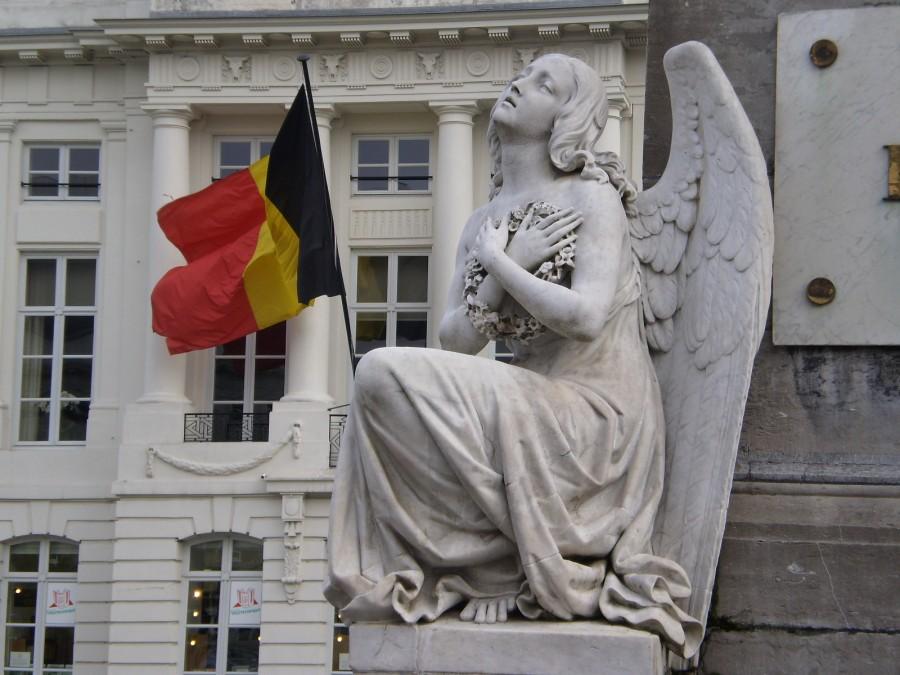Belgium bombing part of ISIS terror crusade
March 29, 2016
Brussels, Belgium became the latest target of terrorism on Tuesday, when at least four suicide bombers attacked a major airport and metro station, killing 31 people and wounding over 230 others, according to The New York Times.
At 7:58 a.m. on March 22, the first bomb struck the departure hall of Zaventem airport, followed by another explosion nine seconds later, according to The New York Times.
The airport released surveillance camera video footage that showed three male suspects with large suitcases believed to contain explosive devices. Two of the males were identified as Ibrahim el-Bakraoui, 29, and Najim Laachraoui, 24, who was believed to have fled the scene, according to The New York Times. Laachraoui, an electromechanical engineer, allegedly made the bomb vests worn by suicide bombers during the November Paris attacks, according to The Independent. Bakraoui, a suicide bomber, was confirmed dead at the scene, but news sources are in disagreement about whether Laachraoui has been captured or remains at large. The third male captured in the footage remains unidentified but is presumed dead also, according to The New York Times.
The third explosion happened at the Maelbeek Metro Station at 9:10 a.m., when Khalid el-Bakraoui, 27, suicide bomber and brother of Ibrahim, detonated the bomb he was wearing, according to The New York Times. Because Brussels houses the European Union headquarters, in addition to civilians, the station is often visited by European Union diplomats and government officials, according to The Washington Post.
The European Union is an organization composed of the partnership of 28 European countries. The EU was formed in the aftermath of World War II and focuses on human rights around the world, political and economic cooperation as well as peaceful unity.
Two Americans from New York reportedly perished in one of the airport explosions, according to The Wall Street Journal. BBC reported that 11 people were killed at the airport and 20 at the metro station.
According to The Guardian, much of the planning and preparation of the Paris attacks took place in Brussels.
Just four days prior to the recent bombings, Brussels law enforcement arrested Salah Abdeslam, 26, the alleged mastermind behind the November Paris attacks, in the Molenbeek neighborhood where he was raised. Abdeslam was the sole survivor of the ten men who killed 130 people and wounded 400 others in Paris last year, according to The New York Times.
Following the attacks, ISIS released a chilling statement through the Amaq News Agency. “We promise to the states that are allied against the Islamic State that they will face dark days in return for their aggression against our state,” the message read. “And what will await you will become harder and more bitter through the grace of Allah.”
Belgium has the highest number of foreign fighters per capita than any other European country, reported the United Nations Working Group on the use of mercenaries, in October 2015. Mandated by the UN Human Rights Council, the Working Group studies trends mercenaries and mercenary activities and their impacts on human rights, according to The Office of the United Nations High Commissioner for Human Rights. A 2014 UN Security Council Report defined foreign fighters as “individuals who travel to a State other than their States of residence or nationality for the purpose of the perpetration, planning, or preparation of, or participation in, terrorist acts or the providing or receiving of terrorist training including in connection with armed conflict.”
According to head of the Working Group and UN human rights expert Elżbieta Karska, the most common motives for foreign fighters range from religious convictions to the need for a sense of belonging and acceptance.
Belgium declared a national three-day mourning period on Tuesday following the attacks, and people from around the world expressed solidarity. Candlelit vigils lit up communities and pictures of hearts colored black, yellow and red-the colors of Belgium’s flag-pervaded social networks.
The victims of the attacks came from about 40 different countries, according to Reuters news source.
















